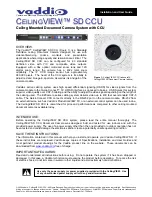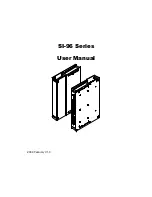
Before Use
4
∫
Care for the camera
•
Do not shake or cause impact to the
camera.
The camera may not be
operated normally or recording of pictures
may be disabled, or the lens may be
damaged.
• Sand or dust may cause a malfunction
of the camera. When you use the
camera on a beach etc., take care so
that sand or dust does not get into the
camera.
• When you use the camera on a rainy day
or on a beach, take care so that water
does not get into the camera.
• If seawater splashes onto the camera,
wet a soft cloth with tap water, wring it
well, and use it to wipe the camera
body carefully. Then, wipe it again with
a dry cloth.
∫
About the LCD monitor/Viewfinder
• Do not press the LCD monitor strongly.
It may cause uneven colours on the
LCD monitor or a malfunction of the
LCD monitor.
• In a place with drastic temperature
changes, condensation may form on the
LCD monitor. Wipe it with a soft, dry cloth.
• If the camera is extremely cold when you
turn the camera on, the image on the
LCD monitor/Viewfinder is slightly darker
than usual at first. However, as the
internal temperature increases, it goes
back to the normal brightness.
∫
About the Lens
• Do not direct the lens to the sun or strong
light sources. It may cause not only a
malfunction of the camera but irreversible
damage to your eye.
• Do not press the lens strongly.
• Leaving the camera with the lens facing
the sun may cause a malfunction. Be
careful when you put the camera outside
or near a window.
∫
About Condensation
Condensation takes place when the
ambient temperature or humidity is
changed as follows:
Be careful of condensation since it causes
stains on the lens, fungus or malfunction.
(P109)
• When the camera is brought inside from
the cold to a warm room.
• When the camera is moved from outside
to an air-conditioned car.
• When cool wind from an air conditioner or
other is directly blown onto the camera.
• In humid places
∫
If you will not be using the camera for
a long time
• Store the battery in a cool and dry place
with a relatively stable temperature.
(Recommended temperature: 15
o
C –
25
o
C, Recommended humidity: 40% –
60%)
• Be sure to remove the battery and the
card from the camera.
• When the battery is left inserted in the
camera for a long time, discharge takes
place even if the camera is turned off. If
you leave the battery inserted for an
extended period of time, it will be
excessively discharged and it may
become unusable even after it is charged.
• To store the battery for a long period of
time, we recommend charging it once
every year and storing it again after you
completely use up the charged capacity.
• When you keep the camera in a closet or
a cabinet, we recommend storing it with
the desiccant (silica gel).
Extremely high precision technology is
employed to produce the LCD monitor/
Viewfinder screen. The result is more
than 99.99% effective pixels with a
mere 0.01% of the pixels inactive or
always lit. However, this will not be
recorded on the pictures in the card.
FZ20-EB.book 4 ページ 2004年7月29日 木曜日 午後9時52分
Содержание LUMIX DMC-FZ20EB
Страница 9: ...Preparation 9 Lens Cap VYK0W96 Strap VFC4078 Lens Hood VYQ3234 Lens Hood Adaptor VYQ3213 ...
Страница 117: ...117 MEMO ...
Страница 118: ...118 MEMO ...
Страница 119: ...119 MEMO ...
Страница 120: ...Matsushita Electric Industrial Co Ltd Web Site http www panasonic co jp global B VQT0M48 F0704Mn0 2000A C ...





































